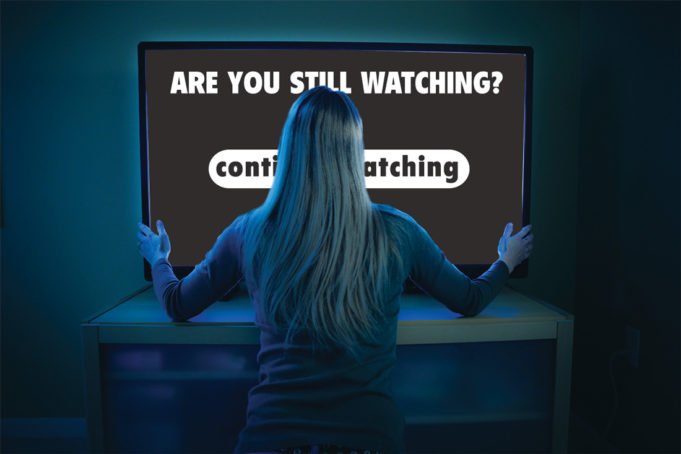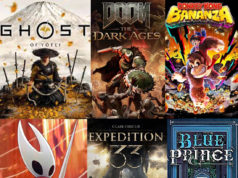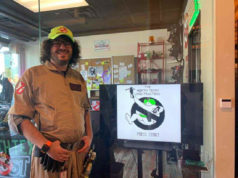Sometime in early October 1991, my best friend Jason and I sat perched on the padded vinyl bumper that bordered the edges of his twin-sized waterbed. He’d just gotten a Super Nintendo Entertainment System for his birthday a few weeks prior, and he was demonstrating the console’s state-of-the-art gaming technology. It was stratospherically superior to the embarrassment that was the plain ol’ regular NES that unworthy peasants like me were forced to make do with. He underlined the point by mercilessly beating me round after humiliating round in the futuristic racing game F-Zero. After about an hour’s worth of thrashing, when the enviable novelty of the console had worn well off, I proposed we watch a little TV in lieu of subjecting myself to further dominance.
I couldn’t tell you what random music video was concluding as he flipped the input selector on the back of his 12-inch all-in-one and the warming electromagnetic rays of MTV filled the room and my eager retinas. I also don’t recall what products were being hawked during the commercial break that immediately followed, but I can vividly recall the exact position of my body as I lay prone on the waterbed. My legs dangled over the vinyl bumper and my upper body slowly rose and fell with the little wave caused by Jason returning to sit after grabbing us each a soda from the kitchen when our favorite cable channel returned to its programming with an enticing graphic teasing “World Premiere Video” spinning across the screen. I sat up just in time for the chiming of the now-iconic opening chords, followed by thundering drum fills oddly synched with the image of black-clad cheerleaders’ pom-pom’d gyrations and a song that suddenly exploded, and then my brain exploded, and I was never the same again.
Not only did “Smells Like Teen Spirit” instantly reshape the music I listened to then — marking a sudden and decided shift from a passive consumption of the standard, generic chart-toppers of the day toward a specifically narrow and clearly defined pursuit of the anti-mainstream — it also reshaped who I was as a person. My identity became that music. It initiated a rapid transformation in me from the sensitive, nerdy nobody I was in elementary school to the sensitive, nerdy punk-rock nobody I, to some degree, still am today. Just about everything I enjoy — from the bands I love to the films I watch and the books I read — somehow all extend like a great interlacing web from that moment. It was an awakening in me. It was my own cultural Big Bang.
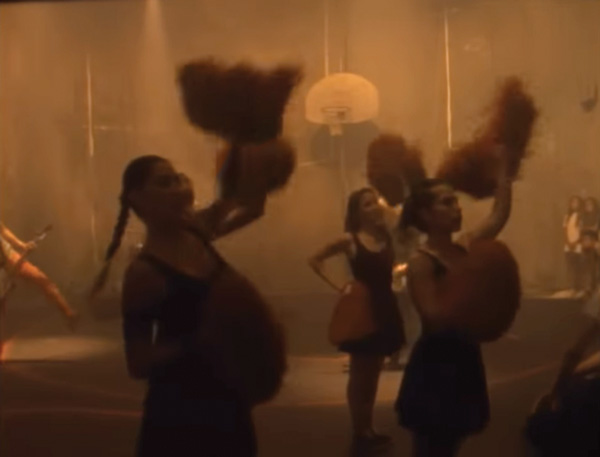
Courtesy Nirvana/YouTube
*****
This vignette is not unique to me by any stretch. All across America, unexceptional youths sitting on waterbeds, or bean bags, or shag-carpeted floors, had their brains rewired at the same exact moment in late ’91, and it resulted in a seismic cultural shift at the time which really can’t be quantified. The wave of counterculture that followed the release of Nirvana’s major-label debut affected nearly every facet of young life, from the clothes we wore to the subject matter of movies and TV shows and even to the political sensibilities of the time. The cultural reverberations helped elect an unknown 46-year-old Democrat from Arkansas who played the sax to the highest office in the land.
There is a lineage of these sorts of cultural temblors. Youth perpetually turn away from the establishment of their forbears and seek new modes of expressing their own ideas. I’m sure the impact of the Beatles’ first appearance on Ed Sullivan was similar for my parents’ generation. The Sex Pistols sent another shockwave 10 years after that. We could say that a smaller wave crested just another decade after my own cultural epiphany with the sudden out-of-nowhere appearance of The Strokes. Heralded as the next-gen saviors of rock ’n’ roll, their too-cool, acerbic New York nonchalance was thrust upon an unassuming Bush-era America and sent legions of high schoolers into Guitar Centers to buy gear to start their own bands. Going back further, how many Stratocasters do you suppose were sold after the release of Buddy Holly’s “That’ll Be the Day”? Or leather-adorned flattop acoustics when Elvis had his own debut on Sullivan? How many aspiring trumpeters took up arms after hearing the transfixing bell-tone runs of Louis Armstrong?
Indeed, music is only one vehicle for these countercultural revolutions. There are countless other movements, intentional or otherwise, represented by all the humanities. Jack Kerouac and the Beats were at the vanguard of written expression at one time. Duchamp, Dalí, and the Dadaists challenged the very essence of what could be called “art.” Jean-Luc Godard pushed celluloid with the French New Wave. Each of these waves, either big or small, contributed to the greater pantheon of human artistic expression and in their way progressed that pantheon into new areas where it had not previously existed. The aim of creative endeavors is the new, the different, the strange.
I belabor all this glorification and grandiosity upon past cultural eruptions led by young people for one reason. As I look at the current cultural landscape through the eyes of a middle-aged father, I project the future my kids will come of age in, and I feel deeply saddened at the very real prospect that they may not experience moments like these. Surely individuals will have their own private sudden and inner world-changing revelations, but the chances of one on the titanic, ubiquitous scale of previous, similar sea changes? I fear not. Nirvana could not happen in 2024.
Record labels no longer seek new and exciting sounds. Corporate consolidation has seized nearly every avenue of the cultural milieu and has assigned monetary value (or lack thereof) to every form of human expression. It has developed a risk aversion that churns out homogenous, safe, and, most importantly, predictably financially lucrative “products.” No imprint now would spend millions of dollars to show the world a sound they’d never heard of before. That money is earmarked for giving us more of the same. Forever and ever.
The same narrow corporate focus purveys every avenue of artistic expression, from filmmaking to literature. The visual arts were replaced by graphic design long ago.
No postindustrial creative landscape has ever been in more desperate need of a countercultural overhaul than right now, yet it seems that in no other time has it been more difficult to enact one.
*****
“ ‘Remember when?’ is the lowest form of conversation.” — Tony Soprano
I can already sense the backlash, partly because you cannot put any opinion into text and put it out into the world without some sort of negative response, yet I can already feel the charges of “good ol’ days syndrome.” That accusation is probably fair. As each generation gets older, it becomes harder for them to relate to the subsequent one. Every aging group will at some point feel like “it was better back in our day.”
I happen to feel that way because it’s true. My generation rode the crest of one wave in a long, unbroken chain of countercultural resets. Since the beginning of modernization, as soon as cultural society began to stagnate, some reversal came along to jar it from its complacency and move creative expression forward.
This self-satisfaction, however, does not make me an old man screaming at clouds, bemoaning “kids these days.” It isn’t that I don’t relate to Gen-Z’s/Alpha’s culture. It’s that I don’t see a culture present among them to be able to relate to or not. Don’t get me wrong. This isn’t because I think the current generation is inherently uncreative or any less driven. It is because I believe they are coming of age in an era in which the entrenched system is so effectively rigged against them and is so designed to crush any innovation and novelty into irrelevancy that they are unable to develop one.
Sickeningly, my generation, the one that straddles Gen X and elder Millennials, has joined forces with the evil Boomer corporate interests and cemented itself into the driver’s seat of the cultural zeitgeist. A generation born of its own disaffected cultural revolution is now almost sociopathic in its bend toward nostalgia and sameness at the expense of artistic progress. An age of individuals who prided themselves on eschewing the mainstream have now become the mainstream, and they have no tolerance for the type of overhaul they themselves benefited from in their formative years.
The tried and true, the rehashed, repackaged, “reimagined,” and re-released are now choking out the groundbreaking, the original, and, most importantly, the challenging with such efficiency that most of us aren’t even unaware of it. In the eyes of the big business interests bent on commodifying the arts, kowtowing to the lowest common denominator has not only become the predominant strategy. It’s the only strategy.
There is evidence of this in every aspect of human creativity. One of the most glaring surrounds the current state of live music. The closures of several local venues in recent weeks has been a topic of steady consideration here and (of course) online. Despite the optimism of some in the local scene that these types of closures tend to be cyclical and are bound to improve at some point, the problem is not limited to Fort Worth. Recent years have seen the shutterings of dozens of music-focused businesses across the country — and outside of it — for the last several years. Australia’s Happy Mag recently chronicled its own country boarding up more than 1,300 independent venues in the last couple of years alone.
How do these closures square with the fact that live music set a record $25 billion in ticket sales last year? Easy. Established touring acts have taken every cent of would-be concertgoer’s live entertainment budgets. Instead of seeing someone new, we are reliving our youth with nostalgia acts. Last year, I spent hundreds of dollars on shows by the Yeah, Yeah, Yeahs, Modest Mouse, Unwound, Dinosaur Jr., Blonde Redhead, the Flaming Lips, and The National. Every one of those bands I began listening to at least 20 years ago. These account for just mid-tier “independent” acts. The price point and the market share of big live entertainment only increases when you consider true mainstream acts like T-Swift, the Rolling Stones, Beyoncé, and Foo Fighters (each also with careers spanning at least two decades). Ask me — a supposed member of the scene who plays in several local bands — how many local up-and-comers I caught this past year in clubs, and I will double over and fall to my knees in guilt and shame.
It doesn’t stop there. Commercial radio has never been a super-reliable gauge of the health of the counterculture, but the recent consolidation of stations has driven the format’s already unbearable redundancy into hyperdrive. Pre-programmed Jack™ FM stations are present in every market to administer your daily dose of “White Wedding” and “In the Air Tonight.” Pop stations offer no more variety. Even the list of top-played tracks on the slowly dying format of scare-quoted “modern” rock reads like it came straight out of 1994. Of the 10 most-played songs on modern rock stations today, seven are from Seattle’s Big Four (Nirvana, Pearl Jam, Soundgarden, and Alice in Chains) alone. The rest belong to AC/DC and Metallica. In this context, the term “modern” is losing its meaning nearly as much as it does in its application to midcentury furniture design.
Surely, streaming services with their endless options and personal control are a way to escape the incessant rotation of the same two dozen songs on your local frequencies. Not so fast. Data shows that by far the most money paid out by providers like Spotify and Amazon Music (i.e., the most streams played) goes straight to the big record labels. The bulk of that dough comes from pre-set playlist engagement — these are often playlists curated by those same major labels featuring the same decades-old, tried-and-true artists from said labels’ own rosters. The labels push the playlists, the provider monetizes the engagement and then further pushes the playlist, and the cash windfall between the two keeps the whole cycle going.
Magazines were once a compass for discovering new music. Corporate consolidation has devoured most of these, too. Following the lead of mega corps purchasing independent print outlets like Rolling Stone and SPIN decades ago, the country’s most popular online music rag was recently bought by Condé Nast. The global multimedia conglomerate decided to fold Pitchfork under the most obvious parent company for a once underground-music tastemaker: the men’s fashion mag GQ. Condé Nast also has an extensive business relationship with Universal Music Group, the largest record label in the world with more than 15 “independent” imprints under its umbrella. Now, if you look at Pitchfork, nearly three of every five articles are about one of their “150 Best Albums of the 1990s.” Coincidence? You know better.
It’s not just the music industry that’s been on a counterculture-killing nostalgia trip. Taken a look at what’s playing in your hometown multiplex at any point in the last five years? Somehow theater marquees still read like it’s pre-Y2K, too. Sequels, reboots, and franchises dominate showtimes. Superhero movies go head-to-head with the latest installments of action properties like The Fast and Furious and Mission Impossible or a fifth (!) Indiana Jones. This fall even sees the release of a new Beetlejuice, a follow-up to a film originally released 36 years ago. Couple this with the Transformers and Teenage Mutant Ninja Turtles franchises that will seemingly never go away, and Gen X has gone absolutely mad with nostalgia.
But we’re fortunate enough to live in the golden age of prestige television, right? Kind of. There seems to be no end to new quality drama and/or comedy series. Shows pop up out of nowhere and overnight become a dominant topic of conversation. Streaming services are in a constant content war, attempting to steal viewer eyeballs from rivals via big-budget, highly produced serials, and consumers flock to suck it all in greedily. Is this because all these buzzy shows are good? Sure, a lot of the time. But are they good for us? The thing is, prestige TV is so great mostly because most of us worker bees would much rather stay home after eight hours of breaking rocks with our bare hands and passively consume culture than do anything that requires any effort of any degree like, I dunno, getting dressed, leaving the house with our weary debit cards in tow, driving in traffic, and attending a local concert. Streaming and podcasts have become so popular in part because we have suffered through a pandemic and now seven running years of antidemocratic bullshit, and we are tired, and our bandwidth is utterly tapped. I’m surprised any of us ever leave the house at all.
Netflix, Hulu, Max, and other services know this and happily capitalize on it. They are now diverting resources once allocated to novel theatrical releases to home-based long-form content designed specifically to achieve maximum numbness among viewers and offer endless bingeable engagement. After a few hours, Netflix used to ask us if we were still watching. They don’t bother to now because they know that we are.
Again, consolidation and its impact aren’t limited to just the popular artistic disciplines. The literary world has also become just as homogenized. Over the past couple of decades, there has been a steady fall in the number of publishing houses, especially independent ones, and those that remain have moved away from thought-provoking literary fiction toward shocking, crime-based modern-day pulp and celebrity biography. The number of legitimate competing houses has fallen from about 15 to 20 in 1990 to just five today — four, if the merger between Penguin Random House and Simon & Schuster can ever make it past the antitrust policies of the DOJ. The house that would like to see that merger finalized, Penguin Random House, which is currently the largest of the remaining publishers, accounts for 40% of the literary market. That means that two of every five books sold line the pockets of the publishing behemoth’s shareholders. If Penguin Random House ever gets its way and can swallow S&S, that figure would jump to six of every 10 books sold. It’s no wonder that James Patterson has been able to slap his byline on more than 200 books ghostwritten by people whose names you’ll never know and that the aisles of Target Super Stores groan with the hottest corporate-backed crime dramas by Colleen Hoover and Taylor Jenkins Reid instead of more substantive works by the likes of Chris Bachelder and Nell Zink.
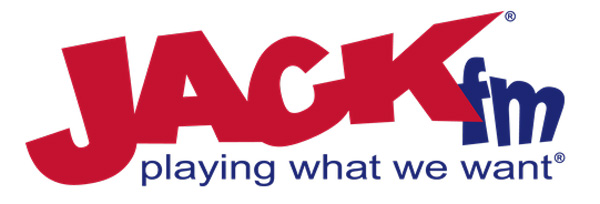
Courtesy Wikimedia Commons
*****
Buried beneath all my gnashing of teeth at the consolidation of corporate media’s control of the arts is the impact of the internet. The world wide web is supposed to be the great equalizer, democratizing the ability of artists to get their work in front of eyes or into ears with an ease that circumvents monied corporate gatekeepers, yet that idealistic vision of the accessibility of the online world has sadly been replaced by a cruel and ironic reality in which artists might actually have even less of a chance of being noticed than ever.
Algorithms reject the new and inspiring in favor of the same and the repetitive, prioritizing lasting engagement over lasting impression. There is an ever-increasing social media-driven monetization of “likes” and “follows” that bastardizes creative expression and motivates “creators” to focus on short, bite-sized, surface-level “content” to capture even a few seconds of attention from scrollers. Rewards are given for a temporary and ever-revolving virality rather than a true artistic expression with real emotional connection.
The internet has connected us closer to one another than we have ever been, but the feeling is often that we are somehow further away from current and future “friends” than at any preceding time. Absent is the collective experience so essential for the beauty (or horror) of the arts to truly sink in. Who knows if that anarchist high school gym video would have impacted me in quite the same way if Jason wasn’t sitting beside me, mouth agape, wearing the same, awed “What the fuck is this?!” expression on his face. If you’ve ever watched a band soundcheck, you know the difference between how impactful the music they’re playing is to an empty room versus how it hits played to a packed house just hours later. The collective “oooh”s and “aaaah”s are necessary for the spectacularness of the fireworks display.
That artists have unprecedented potential for reach is a good thing. The price is that everyone has the same reach. This again incentivizes artists to resort to humiliating social media marketing tricks to stand out. It’s art created for garnering attention rather than connection. I fear that the next potential Nirvana, or Public Enemy, or David Foster Wallace, will disappear among the vast onslaught of guitar-wielding influencers and nonstop viral online content generation, lost like a single raindrop in the Atlantic.
*****
The stagnation of artistic output, whether by the hands of corporate interests or the anonymity of an increasingly online world, is at an all-time high. How can there be such an overwhelming multitude of creative media with so little of it seemingly creative? There may have never been an era riper for a countercultural overthrow of the mainstream than now, but the forces we’ve mentioned have become nearly impenetrable and exist on a scale previous generations did not have to contend with — or could never have imagined. Goliath has grown to such size as to be impervious to David’s sling. The progression and growth of the societal artistic spirit that is so essential to what makes us human is being slowly replaced with a numbness and a banality that are starving off that essential spirit within us as individuals. When art no longer moves us, we are no longer moved to create art.
For my kids’ sake, I truly hope that I’m wrong. It is my sincerest wish that we are simply in a quiet moment before the next countercultural revolution, that the next generation is as aware of the creative stagnation as this old man yelling at clouds.
My favorite Minutemen song is “History Lesson Part 2.” It’s the pioneering California trio’s ode to how punk rock — like it did for me — changed their lives. The opening line is “Our band could be your life.” The line was borrowed by famed music journalist Michael Azerrad as the title for his book about the American underground music of the late 1980s and early ’90s, which featured many bands that were my life at one point or another. I truly wonder what new band could be forming right now, unknown to bitter and jaded Gen-Xers, that could be the life of my kids’ generation. I have to hope that there is one. History tells me that, against the odds, there will be. And I will not understand it, because it is not meant for me. It is meant for the opposite of me. And I will rejoice in its rejection of me.


